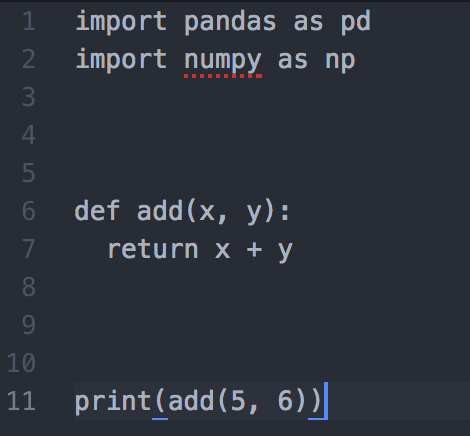
- GIT COMMANDS MAC FOR EDITING FILES HOW TO
- GIT COMMANDS MAC FOR EDITING FILES INSTALL
- GIT COMMANDS MAC FOR EDITING FILES UPDATE
GIT COMMANDS MAC FOR EDITING FILES INSTALL
The preferred way to install Ansible on a Mac is with pip.
GIT COMMANDS MAC FOR EDITING FILES HOW TO
An example inventory file would look like: How to use Ansible to deploy with git. Instead, we describe the configuration that a server should have and let Ansible make the required changes. Install docker-py python module with following command: $ sudo apt install python3-pip git pwgen vim.

The default location for an inventory file is /etc/ansible/hosts but this file can be placed anywhere and used with the -i flag of ansible-playbook. Create a Conda environment based on the environment.
GIT COMMANDS MAC FOR EDITING FILES UPDATE
Installing via PPA (Personal Package Archive): First, you have to include the official project’s PPA into your system by running the following command: $ sudo apt update & sudo apt-add-repository -y -update ppa:ansible/ansible. $ sudo pkg install ansible Installing Ansible on macOS. Using this version of Ansible will guarantee that examples in this tutorial will work as expected. On my system it will spin up a Kubernetes Ubuntu pod, in this pod the verify test will run and the Ansible playbooks will be runned. Ansible Role Linux_nodejs_webserver ⭐ 1 Linux NodeJS Server, with Git, can be used with nvm, or as a production server Ansible 2. Git's decentralization is useful in solving this problem. However, we recommend you use the FQCN for easy linking to the module documentation and to avoid conflicting with other collections that may have the same module name. GitHub Gist: instantly share code, notes, and snippets. git_acp is an Ansible module for git add, git commit, git push and git config operations on local or remote (https/ssh) git repo. Install and start Supervisor using the role we created. for post-receive and pre-receive will run from there and the application will be deployed. The instructions can be found in Installing Ansible with pip. But, I guess, Ansible's git -module cannot do that : (. Create a supervisord file for running the program. (The user.name and user.email fields are most commonly set in the user-level config file.Install git with ansible Install ansible run command to execute above task -: ansible-playbook mainplaybook.

If you only want to retain the user.name and user.email fields from your current config and get rid of all the rest, the easiest thing is to delete all three config files and then simply run git config -global user.name You can list its contents by running: git config -local -list You can list its contents by running: git config -global -list You can list its contents by running: git config -system -list Usually located at /usr/local/etc/gitconfig at least, that's where mine is on my Mac (I installed Git with Homebrew). your entire Git configuration), you can run three different commands for listing the contents of each of those three config files. Which lists the contents of all three files (i.e.

The problem is simply to locate which part of your config is located in which config file. You can edit your config (add/remove entries) by editing those files, or by using the right git-config commands (more robust, but possibly more tedious). Your Git configuration is spread across up to three config files (one for each level). Is there a command to undo all of these? Any help would be appreciated. I tried uninstalling Git, but that didn't make a difference. Ultimately, I would like to remove all of these additional settings. & git statusĪlias.l=log -graph -all -pretty=format:'%C(yellow)%h%C(cyan)%d%Creset %s %C(white)- %an, %ar%Creset'Īlias.lg=log -color -graph -pretty=format:'%C(bold white)%h%Creset -%C(bold green)%d%Creset %s %C(bold green)(%cr)%Creset %C(bold blue)%Creset' -abbrev-commit -date=relativeĪlias.llg=log -color -graph -pretty=format:'%C(bold white)%H %d%Creset%n%s%n%+b%C(bold blue)%an %Creset %C(bold green)%cr (%ci)' -abbrev-commitĪlias.alias=!git config -list | grep 'alias\.' | sed 's/alias\.\(*\)=\(.*\)/\1\ => \2/' | sort

core.excludesfile=~/.gitignoreĪlias.aa=!git add. When I type git config -list, I get an enormous list (shown below), unlike the tutorial that I am watching on where the author only shows a list of user.name and user.email. Someone had this Mac before me and used multiple Git Applications (SourceTree, etc) that seem to have added all kinds of config preferences. I feel like this issue has been addressed before, but I couldn't find it after search through a bunch of posts.


 0 kommentar(er)
0 kommentar(er)
